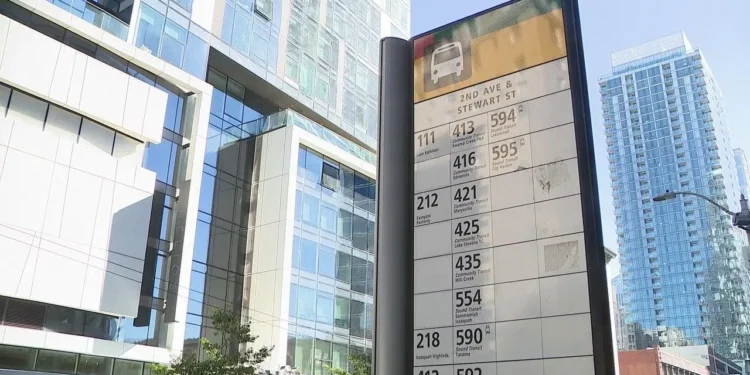King County Metro will increase adult fares across its bus network, Metro Flex, Seattle Streetcar lines, and Water Taxi routes to $3 beginning September 1, marking the first fare increase since the agency established flat pricing in 2018.
The 25-cent increase from the previous $2.75 fare aligns Metro’s pricing with Sound Transit’s flat fare structure on Link light rail and Express bus services. The change affects standard adult fares whilst maintaining existing reduced rates for seniors, disabled individuals, youth, and ORCA LIFT riders on most services.
ORCA LIFT fares will see adjustments on both Water Taxi routes, though reduced fare categories remain unchanged across other Metro services. The Metro Vanpool/Transit pass will increase from $99 to $108 to reflect the new standard transit fare structure.
Metro officials stated that fare policies are designed to support equitable access to transit, meet revenue targets, and ensure regional coordination. The agency conducts periodic fare reviews as part of its budget planning process.
The increase comes as transit agencies across the Puget Sound region work to align pricing structures and recover from pandemic-related ridership declines. Metro’s decision to maintain reduced fares for vulnerable populations reflects ongoing commitment to transit accessibility whilst addressing revenue needs.
The fare adjustment affects daily commuters who rely on Metro’s extensive bus network connecting Seattle neighbourhoods with suburban communities throughout King County. Regular riders will need to adjust budgets for the modest increase, though the impact remains relatively small compared to other transportation costs.
Regional fare coordination simplifies payment for passengers who use multiple transit systems during their journeys, reducing confusion about varying price structures across different agencies. The standardised $3 fare matches Sound Transit’s pricing, creating consistency for users transferring between bus and rail services.
Metro’s fare review process considers multiple factors including operational costs, ridership patterns, and regional economic conditions. The agency balances revenue generation requirements with maintaining affordable public transportation access for diverse community needs.
The September implementation allows riders time to adjust to the new pricing whilst providing Metro with additional revenue during the typically busy autumn transit season when students return to school and commuting patterns stabilise.






